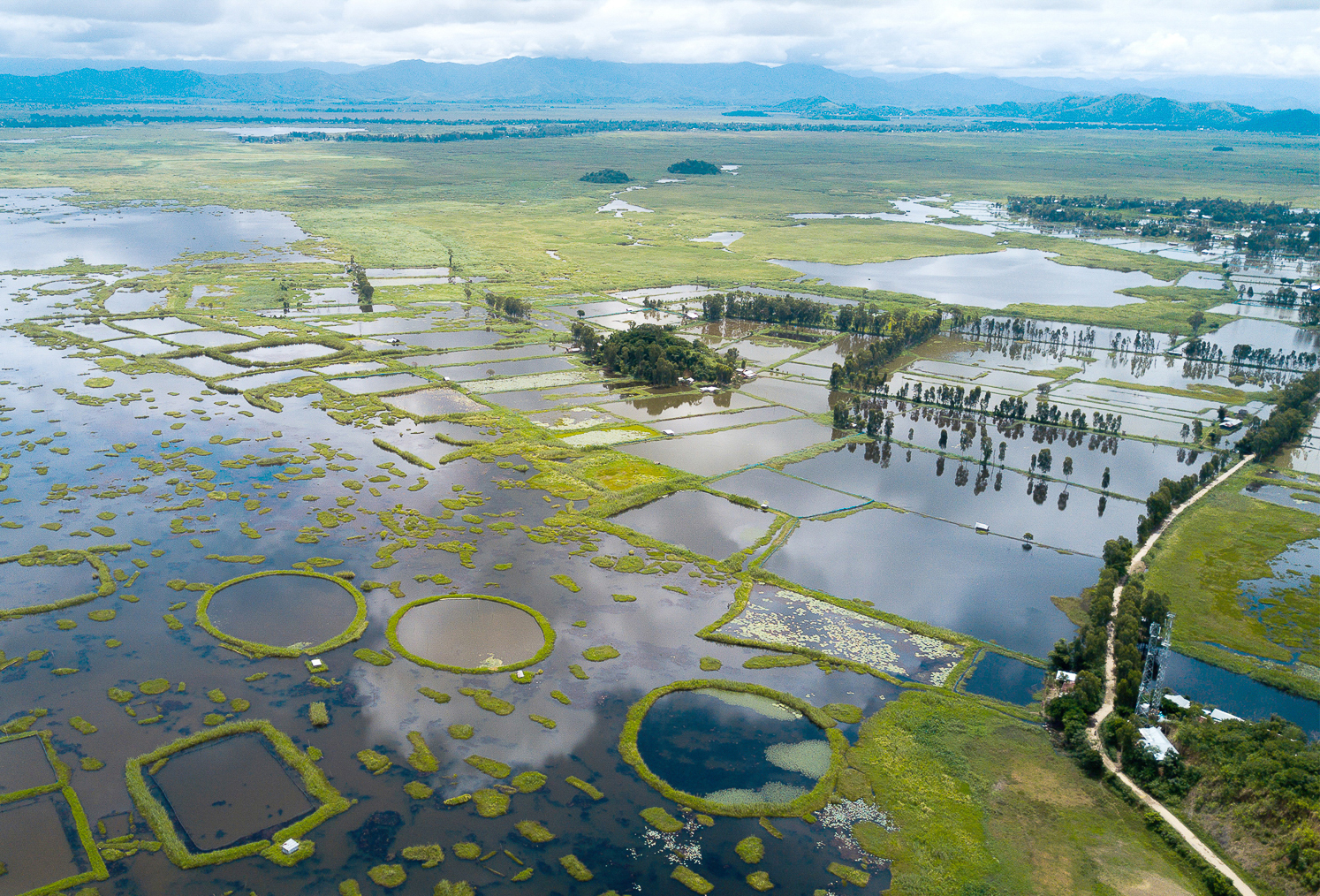
After completing some preliminary reporting in and around the Loktak Lake in Manipur, I began looking to meet an octogenarian to gain insights about life on the Loktak wetland decades before the Ithai Dam was built. My host, Saro Oinanam, surprised me by taking me to meet 92-year-old Sana Hanbi.
Hanbi has lived on the banks of the Loktak Lake in the village of ThangaTombram her entire life. To get to the village, Saro and I walked along the periphery of the lake on a dusty high road that circles the lake. The government wants to convert it to a paved ring road to draw tourists. As we walked, I kept noticing people wading and children playing in waterlogged yards. Saro informed me that parts of the village were flooded due to unusually severe downpours and they had remained inundated for over two months.
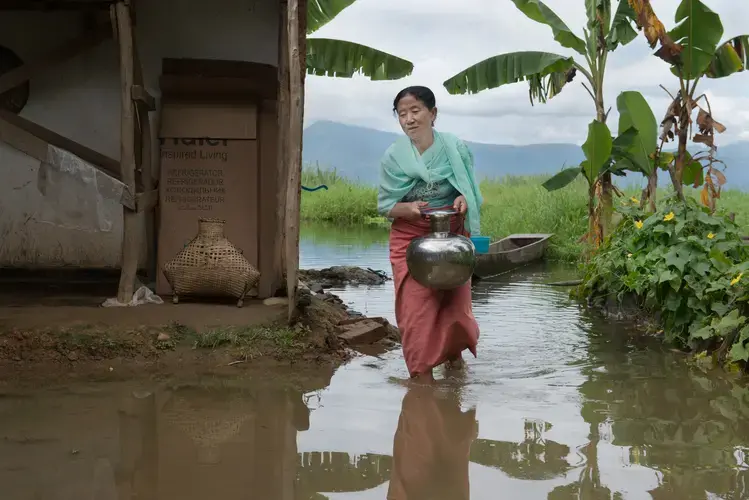
We walked through a narrow alley lined with lush green mango, banana, and jackfruit trees to get to Hanbi's home. Ripe gooseberries were strewn across her front yard. Her son and grandchildren sat on the front porch sipping black tea. I later learned that much of the pastureland around Loktak was lost after the Ithai Dam construction, resulting in the loss of cows and water buffalos.
After Hanbi and I exchanged greetings, I inquired about her earliest memories of Loktak. Hanbi said she was a teenager at the start of World War II. When the battle of Imphal and Kohima began, it was an incredible yet a frightening experience to see numerous Japanese warplanes fly over the lake each day while she fished. At that time, the region was undeveloped and the lake was a wetland because the water levels remained low except during monsoons. People caught native fish like Pengba, Ngaton, and Khabak, using traditional fishing techniques for shallow water. Both the fish and fishing techniques are nearly extinct today. People led herds of water buffaloes into the lake to stir up fish to ensure a big catch. Today, water buffaloes are a rare sight in Loktak.
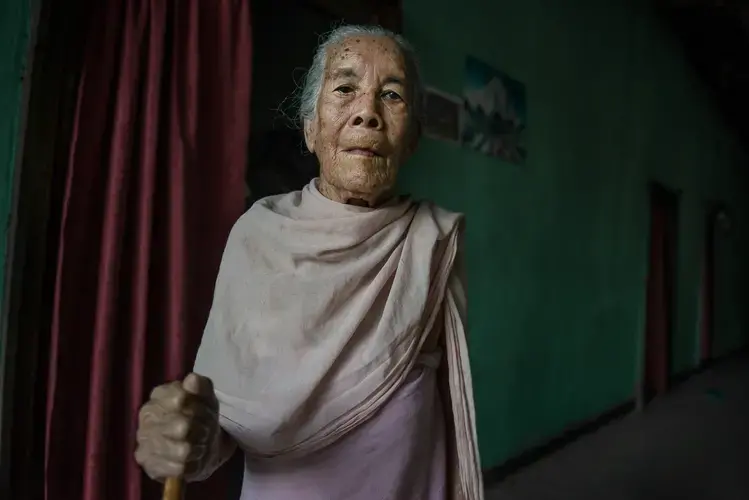
Sana marveled at how the Keibul Lamjao National Park was a common grazing, food and fuel-gathering ground for the Meiteis, the indigenous community. Much has changed over the decades due to the construction of the dam, new lake management policies and population growth, impacting the lives of the Meiteis whose livelihood have been dependent on the lake.
The Loktak Lake is the largest freshwater lake in northeastern India. Located in the state of Manipur, it is the world’s one-of-a-kind wetland ecosystem that has earned the designation of a Ramsar Protected Site of International Importance. The lake holds an immense economic, cultural, and social significance for the people of Manipur.
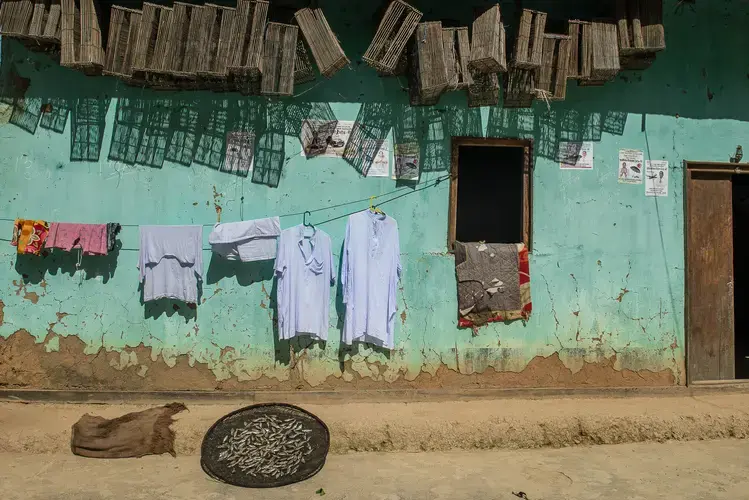
The construction of the Ithai Hydropower Dam in 1983 elevated the water level of the Loktak wetland. It initiated the destruction of this unique wetland ecosystem. The dam permanently flooded over 83,000 hectares of farmland and pastures around the wetland, resulting in the loss of livelihoods and severely impacting the wetland’s biodiversity. The government did not provide compensation to those impacted.
More than 100,000 people through 55 communities directly or indirectly depend on this ecosystem for their food and livelihood. Over the decades, the dam has altered the hydrology and ecology of the Loktak wetland, while continuing to pose threats to the food security of the indigenous community.
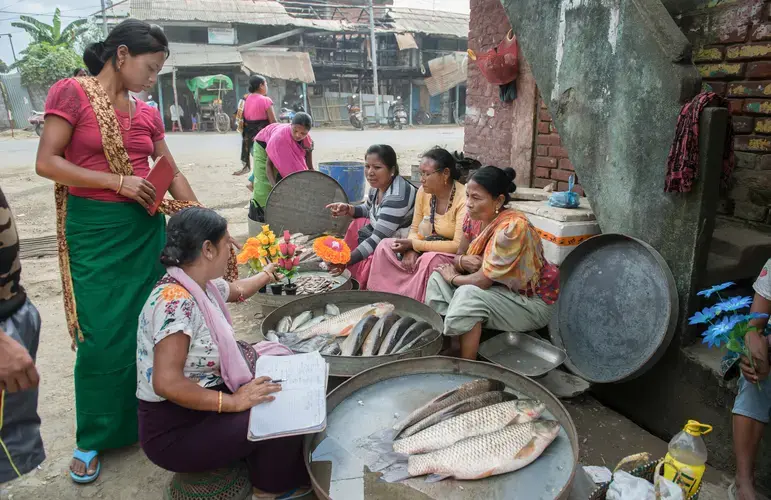
Almost two-thirds of the lake’s 236.21 square kilometers consist of numerous round green islands of biomass called “phumdi.” They are home to over 230 species of aquatic plants—many of which are edible, over 100 species of birds, some 425 species of animals, an endangered species called “dancing deer,” the Keibul Lamjao wildlife refuge, and indigenous people.
Phumdis are critical to this ecosystem because they play a role in water cleansing, nutrient absorption, flood control, and carbon sequestration. They change in shape and size according to the season as well as move around the lake surface, making the ecosystem unique.
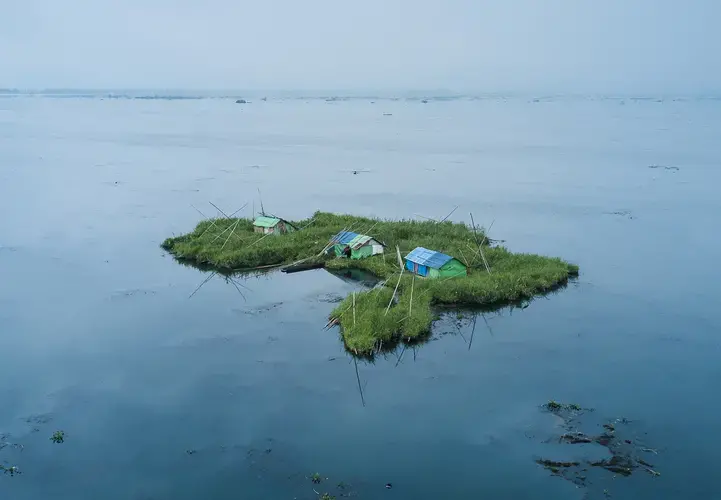
In November 2011, the Loktak Development Authority began arsoning and dredging the phumdis in the name of “lake cleanup,” consequently evicting the indigenous people that inhabited them. Over 700 families who lived on phumdis were evicted from their homes during the clean up. The Indian media reported that corporate interests drove the cleanup.
The villages around Loktak Lake experienced unprecedented flooding this year. The people I interviewed unflinchingly told me that flooding in the Loktak region is an outcome of building the Ithai Dam across the Manipur River, and climate change has further aggravated this decades-long ecological disaster. People of Loktak call the Ithai barrage "a dam of sorrows." In recent years the indigenous people and local non-profits have made a joint effort demanding the removal of the dam. In August 2017, the state Chief Minister Biren Singh formally urged Prime Minister Narendra Modi to consider the decommissioning of the Ithai Dam as a permanent solution to the ecological disaster.










